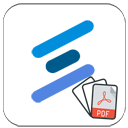Adjectives are the colorful paints of the English language. They allow you to describe the world, express emotions, and communicate ideas more vividly. For ESL (English as a Second Language) learners, mastering common adjectives is one of the quickest ways to speak more fluently and sound more natural.
In this article, we’ll cover the top 100 adjectives that you’ll hear in everyday conversations, read in books, and use in writing. We’ll also explore their meanings, common collocations, and tips for remembering them.
Table of Contents
Why Focus on Adjectives?
Adjectives describe nouns — people, places, things, and ideas. By learning them, you can:
Add detail to your speech.
Clarify meaning (e.g., “a big dog” is different from “a small dog”).
Make your English more interesting.
Understand English speakers better, because these words appear often in daily life.
How to Learn Adjectives Effectively
Before we dive into the list, here are three tips:
Group by topic – Learn adjectives for size, color, emotions, etc.
Use them in sentences – Don’t just memorize; practice.
Connect to your life – Use adjectives to describe your own experiences.
The Top 100 Adjectives for ESL Learners
Below is a categorized list so you can learn in logical groups.
1. Adjectives for Size and Shape
big – large in size
small – not big
tall – having height
short – not tall
long – measuring a great length
wide – having great width
narrow – opposite of wide
huge – extremely large
tiny – extremely small
round – shaped like a circle
Example paragraph:
“I live in a big city with tall buildings and narrow streets. My apartment is small but cozy, and in the living room, I have a round table. Last week, I saw a huge dog walking next to a tiny cat — it was so funny!”
Your turn: Speak aloud and describe your home or neighborhood using at least five of these words. Pretend you are telling a friend who has never been there.
2. Adjectives for Color
red – color of blood or strawberries
blue – color of the sky on a clear day
green – color of grass
yellow – color of the sun
black – opposite of white
white – opposite of black
brown – color of chocolate
gray – between black and white
pink – light red
orange – color of the fruit
Example paragraph:
“This morning, I wore a blue shirt and black pants. My friend had a green bag and yellow shoes. At the café, we drank coffee in white cups and ate a slice of brown chocolate cake with a pink decoration on top.”
Your turn: Imagine you are shopping for clothes. Speak aloud to describe what you are looking for, using at least six colors.
3. Adjectives for Time and Speed
early – before expected
late – after expected
fast – moving quickly
slow – moving without speed
new – recently made
old – existing for a long time
young – not old
modern – related to the present
ancient – from long ago
quick – happening fast
Example paragraph:
“I arrived early to the train station, but my friend was late. The train was very fast, but the bus we took later was slow. We visited a modern museum and then walked through ancient streets with old buildings.”
Your turn: Tell a story about a trip you took, focusing on whether things were fast, slow, early, or late.
4. Adjectives for Quantity
many – a large number
few – a small number
several – more than two but not many
all – the whole amount
some – an unspecified amount
enough – as much as needed
more – greater amount
less – smaller amount
plenty – more than enough
fewest – smallest in number
Example paragraph:
“There were many people at the concert, but only few seats left. We found enough chairs for our group. I drank more water than usual because it was hot, and there was plenty of food for all the guests.”
Your turn: Speak aloud as if you are planning a party. Explain how much food, drink, and seating you have using these adjectives.
5. Adjectives for Emotions
happy – feeling good
sad – feeling unhappy
angry – feeling upset or mad
excited – full of energy and anticipation
nervous – worried or uneasy
relaxed – calm and not tense
tired – needing rest
bored – uninterested
afraid – scared
confident – sure of yourself
Example:
“I was excited to see my old friends, but I felt a little nervous before meeting them. When they arrived, I was happy and proud to introduce them to my family. Later, we watched a movie, and I was bored halfway through, but the ending left me surprised.”
Practice: Recall your last holiday. Describe your feelings at different moments.
6. Adjectives for Quality
good – positive in quality
bad – poor in quality
great – very good
terrible – very bad
excellent – extremely good
awful – extremely bad
perfect – without fault
poor – low in quality
wonderful – very good, pleasing
horrible – extremely unpleasant
Example:
“The hotel had excellent service and clean rooms. The breakfast was fresh and delicious. Unfortunately, the Wi-Fi connection was weak, and the air conditioner was broken. Overall, the experience was good, but not perfect.”
Practice: Describe a product you recently bought, using at least five of these adjectives.
7. Adjectives for Appearance
beautiful – very pleasing to look at
ugly – unpleasant to look at
pretty – attractive
handsome – good-looking (usually for men)
cute – small and attractive
clean – without dirt
dirty – not clean
smart – intelligent or stylish
stylish – fashionable
plain – not decorated
Example:
“She wore a beautiful dress and looked very stylish at the party. Her hair was neat, and her shoes were pretty. The venue was decorated nicely, except for one messy corner that looked plain compared to the rest.”
Practice: Imagine you are a fashion critic. Describe someone’s outfit in detail.
8. Adjectives for Taste and Smell
sweet – sugary taste
sour – acidic taste
bitter – sharp, unpleasant taste
salty – full of salt flavor
fresh – recently made or obtained
delicious – very tasty
spicy – full of spice or heat
bland – lacking flavor
rotten – spoiled, bad smell
savory – pleasant, not sweet
Example:
“The cake was sweet and delicious, but the lemonade was too sour. The salad was fresh, but the soup tasted bland. I loved the fragrant aroma of the coffee, but the cheese had a rotten smell.”
Practice: Describe your favorite meal, including taste and smell.
9. Adjectives for Distance and Position
near – close by
far – distant
high – above the ground
low – near the ground
close – near in distance
distant – far away
upper – higher in position
lower – beneath something
central – in the middle
outer – on the outside
Example:
“My school is near my house, but my cousin lives far away. My room is on the top floor, and the kitchen is at the bottom of the building. We have a small garden outside, but I spend most of my time inside.”
Practice: Give a friend directions to your favorite café, using these words.
10. Adjectives for Necessity and Possibility
possible – able to be done
impossible – cannot be done
necessary – needed
unnecessary – not needed
certain – sure
uncertain – unsure
likely – probable
unlikely – not probable
essential – very important
optional – not required
Example:
“It’s important to study every day if you want to improve your English. It’s possible to learn quickly, but unlikely without practice. Some homework is optional, but attending class is required. Good pronunciation is essential for clear communication.”
Practice: Give advice to a new student about learning English, using at least five of these words.
Final Tip:
Don’t just read these adjectives. Speak them aloud, record yourself, and try to use them in everyday conversations. The more you use them, the faster they’ll become part of your active vocabulary.
Practice Ideas
Describe your day: “I saw a big, red car this morning.”
Use flashcards with adjectives and example sentences.
Watch English shows and write down adjectives you hear.
Play description games like “Guess the object” with a friend.
- Use this list within our Spelling Bee Training app using the links below:
 | > Top 100 ESL Adjectives PDF Format |
 | > Top 100 ESL Adjectives FlashCards in PDF |
 | > Top 100 ESL Adjectives on SBN APP |
Conclusion
By learning and practicing these 100 adjectives, ESL learners can express themselves more accurately, add color to conversations, and understand native speakers better. The key is active usage — reading them isn’t enough. Speak them, write them, and make them part of your daily English life.
If you want, I can also create a printable PDF version of this article with a table that includes word, meaning, and example sentence so learners can study offline. That would make it more like a ready-to-use ESL teaching tool.


